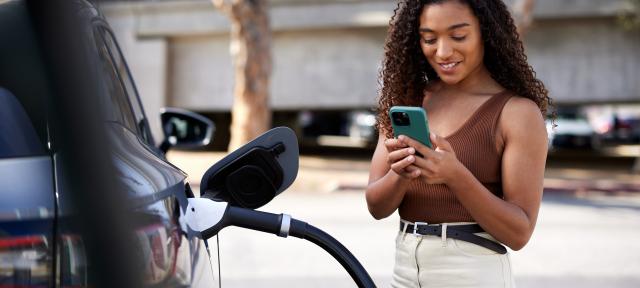
Thinking of making the transition to EV, or just made the switch? We know that understanding the different charging technologies available can seem daunting, but we’re here to help.
In this handy blog post, we break down breakdown and simplify the world of EV charging technology, so you can get charging and keep moving!
Types of EV charging
There are primarily four types of EV charging, distinguished by charging power.
- Slow charging (3-6 kW):
This is the most basic type of charging, often used for overnight charging at home. Slow chargers typically deliver up to 3-6 kW power, fully charging the average EV battery in 6-12 hours. Slow charging can be carried out using a standard plug socket, however, for optimised charging, it is recommended that a dedicated charging unit is installed by a dedicated installer.
- Fast charging (7-22 kW):
Fast charging delivers a power output between 7 kW and 22 kW, charging an EV in 3-4 hours. You can typically find these chargers in public car parks and workplaces.
- Rapid charging (43 kW AC and 50-100 kW DC):
A popular type of public charging. Rapid chargers provide power output from 50 kW to 100kW. Depending on the EV model and battery capacity, they can charge an EV up to 80% in just 20-30 minutes. The GeniePoint network has over 500 rapid chargers across the UK and our chargers are situated in convenient locations, such as at Morrisons Supermarkets and Premier Inn Hotels.
- Ultra-rapid charging (100+ kW DC):
Ultra-rapid charging delivers power above 100 kW to 350 kW. For vehicles that accept 100 kW or more, these chargers can charge a battery from 20% to 80% in roughly 10-20 minutes. If an EV isn’t capable of accepting over 50 kW, these charge points can still be used, but the power will be restricted to the level the vehicle can handle. You will often see ultra-rapid chargers within an EV charging Hub, like the GeniePoint charging Hub at Morrisons Little Clacton.
AC and DC charging
Alternating current (AC) and direct current (DC) refer to the type of current delivered by the electric charge point. Most slow and fast chargers deliver an AC charge, which the car’s onboard converter then turns into DC to store in the battery. However, rapid chargers typically deliver a DC charge directly to the vehicle’s battery, achieving a much faster charge rate.
Connector types
Once you understand charging speed, the next step is familiarising yourself with different connector types. Your EV model will dictate what kind of connector you need. If you’re not sure, refer to your vehicle handbook. Some of the most common connector types are:
AC Charging
- Type 1: Standard US connector and is single phase only.
- Type 2: Standard EU connector and can carry three phase power.
DC Charging
- CHAdeMO: Used for rapid charging, typically by Asian manufacturers (Nissan, Toyota).
- CCS: Combines slow and rapid charging capabilities into one, predominantly used by US and EU manufacturers, but is becoming more widespread globally.
The GeniePoint network
GeniePoint network serves over 200,000 registered drivers, with over 500 rapid charge points across the UK. We’re all about ensuring drivers can get a charge whenever and wherever they need it, through providing convenient and accessible EV charging infrastructure.
To find your nearest charger and get charging, download our mobile app, or visit: https://www.geniepoint.co.uk/ds
New to EV charging? Read our new EV driver guide: https://drivers.geniepoint.co.uk/blog/ultimate-guide-new-ev-drivers